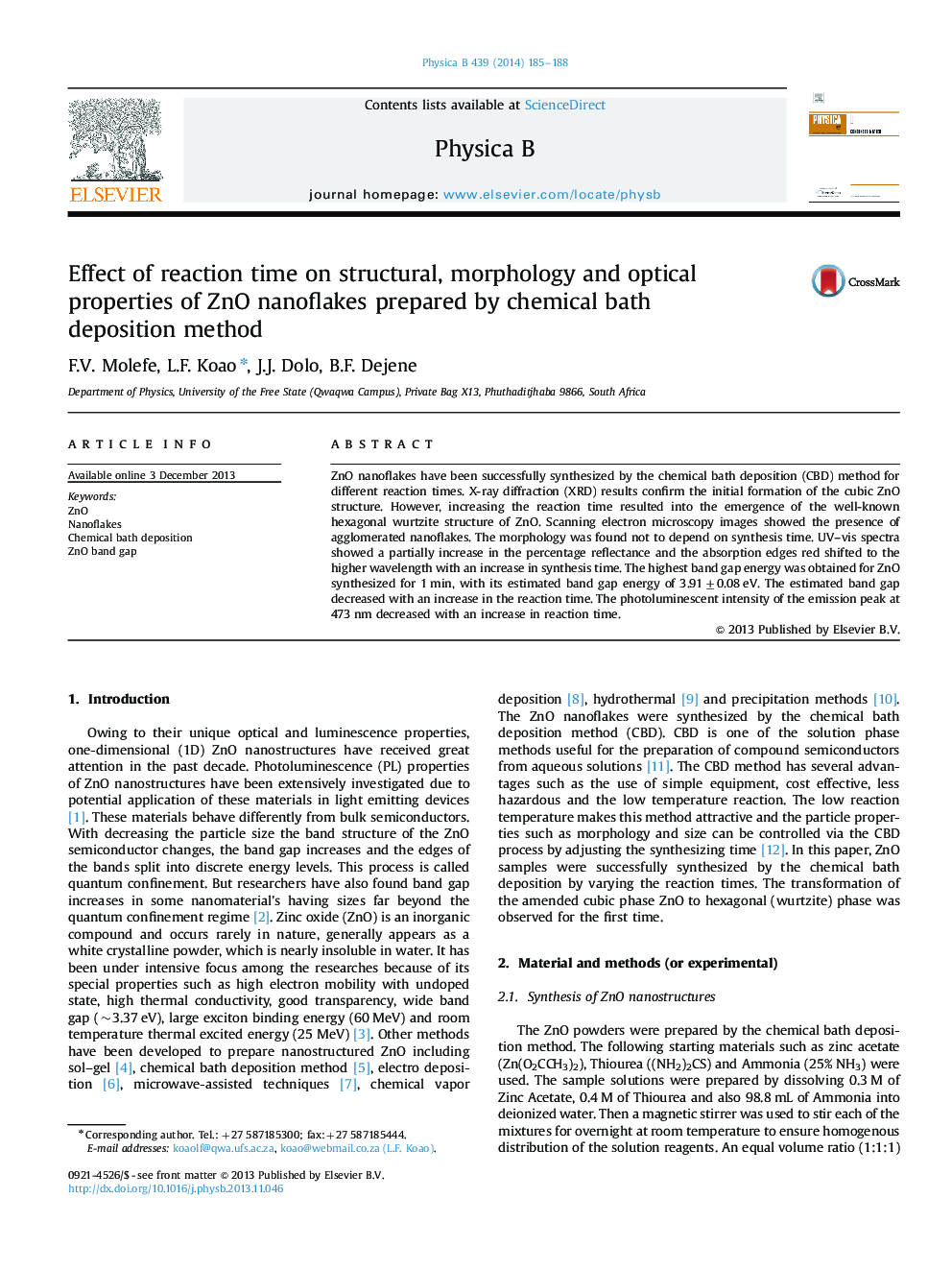| Article ID | Journal | Published Year | Pages | File Type |
|---|---|---|---|---|
| 1809694 | Physica B: Condensed Matter | 2014 | 4 Pages |
ZnO nanoflakes have been successfully synthesized by the chemical bath deposition (CBD) method for different reaction times. X-ray diffraction (XRD) results confirm the initial formation of the cubic ZnO structure. However, increasing the reaction time resulted into the emergence of the well-known hexagonal wurtzite structure of ZnO. Scanning electron microscopy images showed the presence of agglomerated nanoflakes. The morphology was found not to depend on synthesis time. UV–vis spectra showed a partially increase in the percentage reflectance and the absorption edges red shifted to the higher wavelength with an increase in synthesis time. The highest band gap energy was obtained for ZnO synthesized for 1 min, with its estimated band gap energy of 3.91±0.08 eV. The estimated band gap decreased with an increase in the reaction time. The photoluminescent intensity of the emission peak at 473 nm decreased with an increase in reaction time.
